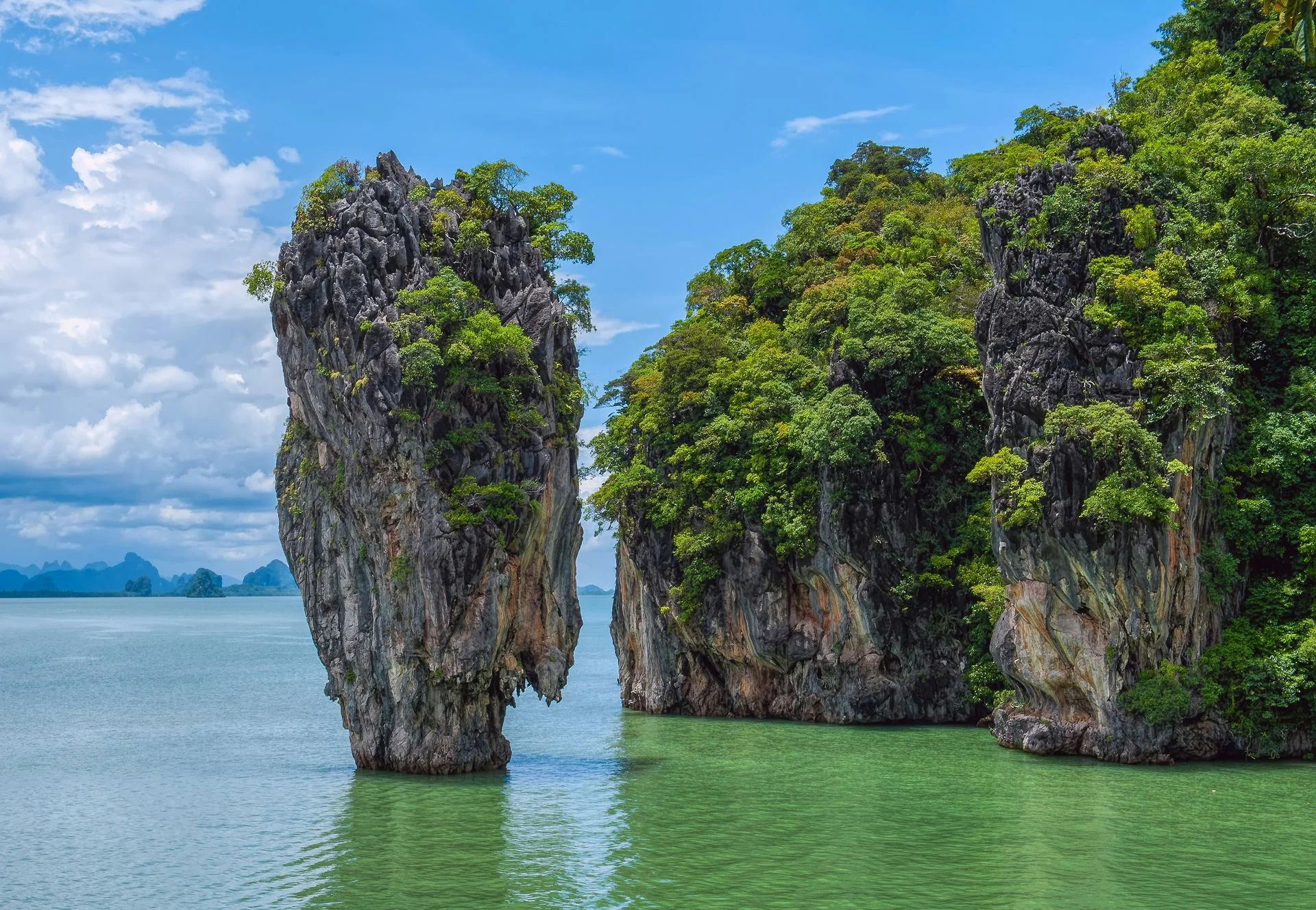Scuba Diving in Phuket
The Ultimate Guide
Phuket is Thailand’s largest island and a gateway to the Andaman Sea’s best diving. While its beaches draw sun‑seekers, just offshore you’ll find coral slopes, granite pinnacles, dramatic walls and an intriguing shipwreck teeming with life. The nearby Racha islands offer year‑round clear water and easy dives, while to the east the King Cruiser ferry wreck, Shark Point, Anemone Reef and Koh Doc Mai deliver deeper currents, leopard sharks and superb soft corals. With a busy international airport and plenty of dive centres, Phuket is a convenient base for day trips and liveaboards further afield.
Difficulty
Easy
Temperature
26–29°C
Visibility
10–30 m

Diving Highlights
Best Months to Dive
Getting to Phuket for Diving
✈️Transportation
Phuket has its own international airport on the north of the island.
From Phuket International Airport it’s about an hour’s taxi ride to Chalong on the south coast, where most day‑trip dive boats depart.
Many international routes connect via Bangkok;
the flight from Bangkok to Phuket takes around 90 minutes.
Phuket is linked to the mainland by a bridge and there are also bus and ferry connections from Krabi and Phi Phi, but flying is the fastest way.
Dive centres usually arrange transfers to their boats.
Country
Thailand
Currency
Thai Baht
Electricity
220V, 50Hz, plugs A/B/C
Cost of a Dive Trip in Phuket
Day Trip
Meal
Accommodation
Best Dive Sites in Phuket
🐠Racha Yai
The nearest large island south of Phuket, Racha Yai offers year‑round clear water and easy diving. Shallow bays feature sloping coral gardens, artificial reef blocks and several small wrecks. Expect reef fish, cuttlefish, nudibranchs and the occasional turtle. Depths range from 2 m to 20 m, making it ideal for beginners and training dives.
🐢Racha Noi
Located further south, Racha Noi features deeper reefs and massive granite boulders reminiscent of the Similan Islands. Currents can be strong and depths exceed 40 m, drawing pelagic species like eagle rays, marble stingrays, barracuda and sometimes manta rays. Some shallow areas allow beginners to enjoy the clear water, but most sites suit advanced divers.
🦈Shark Point
A marine sanctuary east of Phuket, Shark Point consists of limestone pinnacles dropping to 24 m and covered in soft corals and sea fans. It is famed for its resident leopard sharks and host of critters including pipefish, seahorses and nudibranchs. Currents can be brisk, so it’s recommended for experienced divers.
🐙Anemone Reef
Lying close to Shark Point, this pinnacle is carpeted with sea anemones that sway in the current. Depths of 5–25 m make it accessible to most divers. Search the cracks for seahorses, ghost pipefish and boxer shrimps, and keep an eye out for pelagic visitors like snappers, sweetlips and the occasional leopard shark.
🐚King Cruiser Wreck
The King Cruiser ferry sank in 1997 and now rests upright at 16–31 m. This large car‑ferry wreck shelters huge schools of snapper and barracuda, along with frogfish, scorpionfish and porcupinefish. Penetration is limited as parts of the car deck have collapsed, but experienced divers can explore the wheelhouse. Currents can be strong, so an advanced certification is required.
🦑Koh Doc Mai
This small limestone island between Phuket and Shark Point offers spectacular wall diving. The vertical walls plunge to around 25 m and are clothed in soft corals, gorgonians and whip corals. It’s a haven for macro enthusiasts with seahorses, ghost pipefish and nudibranchs hiding in the cracks, while pelagics such as giant barracuda sometimes cruise by. Currents are often strong and visibility varies 10–20 m, so the site suits advanced divers.
What Divers Say About Diving in Phuket
Marcus Rodriguez
DivemasterPhuket diving is all about variety. One day you might be gliding over the coral gardens of Racha Yai with swimming‑pool visibility, and the next dropping onto the King Cruiser wreck to be engulfed by clouds of snapper and barracuda. Shark Point and Anemone Reef were highlights for me: carpets of pink anemones, swirling anthias and the occasional leopard shark cruising past. Currents at some sites keep things exciting, and surface intervals on board with fresh fruit and Thai food feel like a holiday in themselves. The island is busy, but there’s something to suit every level of diver, and it’s easy to tag on a trip to the Similan Islands or Phi Phi if you have extra time.
Frequently Asked Questions About Diving in Phuket
When is the best time to dive in Phuket?
November to April offers dry weather, calm seas and the clearest visibility. May to October is the rainy season; Racha Yai and Racha Noi still have good conditions but eastern sites can be murky.
What marine life can I expect?
Leopard sharks are the stars of the east‑coast sites, along with reef sharks, turtles, stingrays, moray eels, schools of snapper and barracuda, and colourful soft corals and anemones. Occasionally manta rays visit Racha Noi.
Is Phuket suitable for beginners?
Yes. Racha Yai and many local reef sites have calm conditions and shallow depths suitable for training. Shark Point, Anemone Reef, King Cruiser and Koh Doc Mai are best for advanced divers due to depth and currents.
Do I need a liveaboard to dive Phuket?
No. Most sites are visited on day trips from Chalong. However, liveaboards departing Phuket also visit the Similan and Surin Islands for longer expeditions.
How many dive sites are around Phuket?
There are more than a dozen popular sites around Phuket itself, plus dozens more in the wider Andaman Sea accessible by day or overnight trips.
Can I see manta rays or whale sharks in Phuket?
Manta rays are occasional visitors to Racha Noi, particularly in March and April. Whale sharks are rare in Phuket but more commonly seen at the Similan Islands.